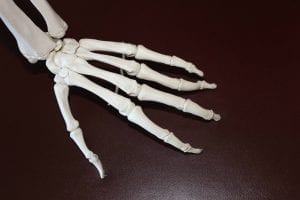Fibrodysplasia Ossificans Progressiva (FOP)
What is fibrodysplasia ossificans progressiva?
Fibrodysplasia ossificans progressiva (FOP) is a rare disorder in which bone forms outside of the skeletal structure. Muscle, ligaments, and tendons become ossified, or replaced by bone, which can severely restrict or prevent movement.What are the symptoms of fibrodysplasia ossificans progressiva?
FOP is characterized by the transformation of tissues outside the skeleton into bone. Typically the process of ossification begins around the neck or shoulders and proceeds to the limbs. At birth, many people with FOP are observed to have a malformation of the big toe and/or thumbs.What causes fibrodysplasia ossificans progressiva?
The most common cause of FOP is a genetic mutation of the ACVR1 gene (a gene which helps promote and control bone growth). It is inherited through an autosomal dominant pattern. FOP occurs in about 1 in 1,600,000 newborns.How is fibrodysplasia ossificans progressiva diagnosed?
A thorough physical examination may be enough to diagnose FOP. A specific set of characteristic deformities of the big toe may be detected by physicians. Diagnosis is often confirmed by genetic sequencing of the ACVR1 gene.What are the treatments for fibrodysplasia ossificans progressiva?
No effective cure for FOP exists. Corticosteroids may be useful in the treatment of inflammation and swelling. Other medications, such as muscle relaxants, can help ease symptoms but should only be administered with careful monitoring by physicians. Surgical removal of tissue or bone matter carries high risks and may instead cause more pervasive and painful bone growth.Where can I find out more about fibrodysplasia ossificans progressiva?
Fibrodysplasia Ossificans Progressiva (FOP) Articles




Rare Disease Patients in Bangladesh Struggle with Diagnosis and Treatment
Rose Duesterwald
January 17, 2023
Read More »

Fibrodysplasia Ossificans Progressiva: A Rare Disease That Turns The Body Into Bone
Rose Duesterwald
July 26, 2022
Read More »

FOP: An Abnormality in the Toe is Actually An Ultra-Rare Disease
Rose Duesterwald
May 13, 2022
Read More »






